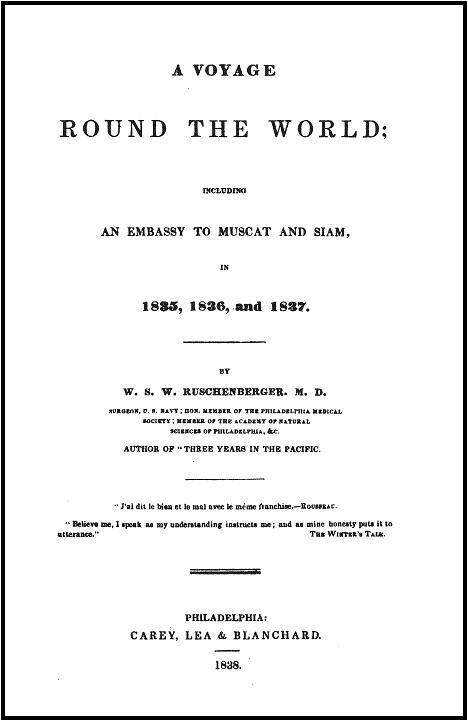|
27° 6' 30" north, and the longitude 142° 16' east.* Their position, on the most modern chart, is very much to the westward.
We found the entrance of the harbor, the approach to which is very pretty, to be on the south-western side of the island. The rocks are, in many places, castellated, and some of them, on close examination, present the appearance of rude masonry, wherein the stones had been piled up loosely together, and a mortar, or cement, afterwards poured in amongst them. Within a few miles of the coast are seen, here and there, a fragment of rock standing above the sea, like a sentry-box, or watch-tower.
The general outline of the bay is oval, being about a mile and a half long, and three-quarters of a mile wide, having the entrance towards the southern end, which, between the promontory, on the south side, and the quoin-shaped rock, mentioned by Beechey, we estimated to be half a mile wide. The breadth of the channel, however, does not exceed a quarter of a mile. The land round the bay is broken into numerous angular hills by ravines, rather than valleys, beautifully green with close-growing trees and shrubs, which flourish to the water's edge. The average height of the hills is, perhaps, four hundred feet; and the highest point does not, probably, exceed six hundred. The shore of the harbor is broken into several small bays, or coves, bounded by white sand beaches, which, contrasting with the blue sheet of water, and, here and there, the white spray dashing over a dark rock, imparts a picturesqueness to the whole scene.
However bright the picture to a sea-weary voyager, or however fit for the pencil, Mazarra and his followers saw nothing in the deep ravines, and fan-leaf palm, and cabbage-tree, to invite them to establish their home upon this uninhabited island. But it was too late to turn back. Though disappointed to find there were no plains of any extent, and the small basins of level land among the hills were covered by a close jungle, they set to work, and now show, with no little satisfaction, the result of their tedious and painful toil. The same industrious perseverance in the 'far west' would have made them comparatively rich men; but here their snugly thatched cabins are valueless, in the event of their leaving the island, which is not improbable, and then their six years' labor is thrown away. Nor have they been free from those difficulties from which they fled. They found here, as every where else, that man is doomed to earn his bread by the sweat of his brow. Until their first harvest, their
|
 Whalesite Home
Bonin Home
Whalesite Home
Bonin Home

